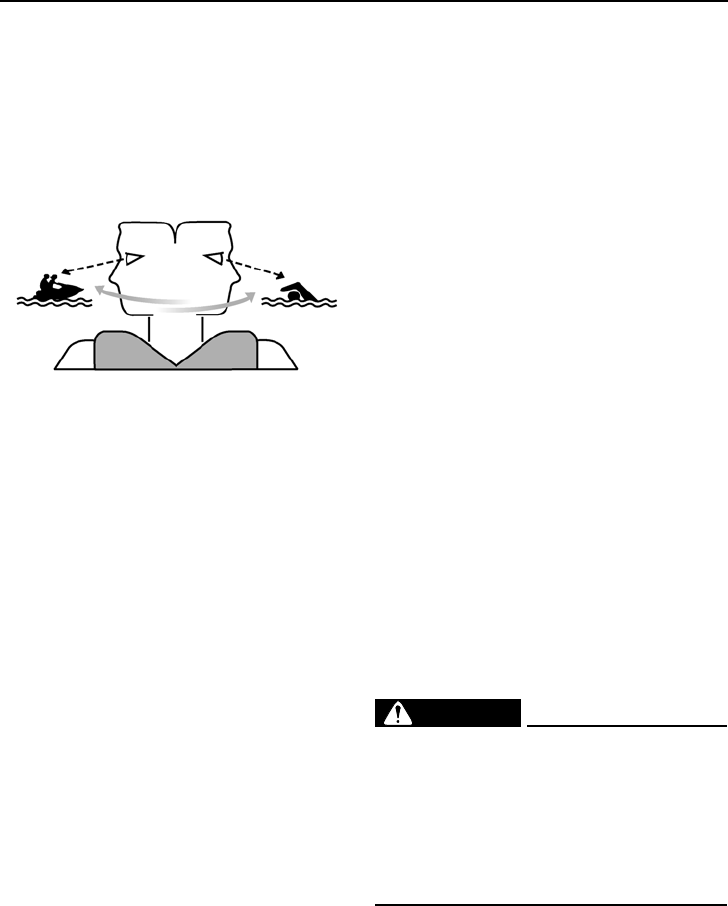
Operation
75
Check state and local laws before operating
your watercraft.
Operate defensively at safe speeds and keep
a safe distance away from people, objects,
and other watercraft. Select a wide area to
learn in, where there is good visibility and light
boat traffic.
Use the buddy system—operate with some-
one nearby. Scan constantly for people, ob-
jects, and other watercraft. Be alert for
conditions that limit your visibility or block your
vision of others.
Attach the engine shut-off cord to your left
wrist and keep it free from the handlebars so
that the engine stops if you, the operator, fall
off.
Wear a personal flotation device (PFD). All
riders must wear a U.S. Coast Guard ap-
proved PFD that is suitable for personal wa-
tercraft use.
Wear protective clothing. Severe internal inju-
ries can occur if water is forced into body cav-
ities as a result of falling into the water or
being near the jet thrust nozzle. Normal swim-
wear does not adequately protect against
forceful water entry into the rectum and vagi-
na. All riders must wear a wetsuit bottom or
clothing that provides equivalent protection.
Such clothing includes thick, tightly woven,
sturdy and snug-fitting apparel such as den-
im, but does not include spandex or similar
fabrics, like those used in bicycle shorts. A full
wetsuit can also protect against hypothermia
(subnormal body temperature) and abra-
sions.
Footwear and gloves are recommended.
Eye protection is recommended to keep wind,
water, and glare from the sun out of your eyes
while you operate your watercraft. Restraining
straps for eyewear are made which are de-
signed to float should your eyewear fall in the
water.
You should grip the handlebars firmly and
keep both feet on the floor of the footwell. Do
not attempt to ride with passengers until your
operating skills are fully developed.
EJU33050
Riding with passengers
When 2 or 3 persons (including the operator)
are on board, the watercraft handles different-
ly, and is not as easy to maneuver, so operat-
ing it requires a higher degree of skill. Before
attempting to operate the watercraft with pas-
sengers on board, the operator must practice
operating the watercraft alone enough to be
able to acquire the necessary skills.
The passengers must always wear a U.S.
Coast Guard approved PFD and a wetsuit
bottom or equivalent.
WARNING
EWJ00540
Do not apply throttle when anyone is at the
rear of the watercraft. Turn the engine off
or keep it at idle. Water and/or debris exit-
ing the jet thrust nozzle can cause severe
injury. Passengers should not attempt to
board the watercraft if the operator is ap-
plying throttle.
Do not give a ride to children whose feet can-
not reach the floor of the footwell. The pas-
sengers should hold on firmly, either to the
person in front of them or to the handgrip pro-
UF1W10E0.book Page 75 Monday, November 26, 2007 3:57 PM


















